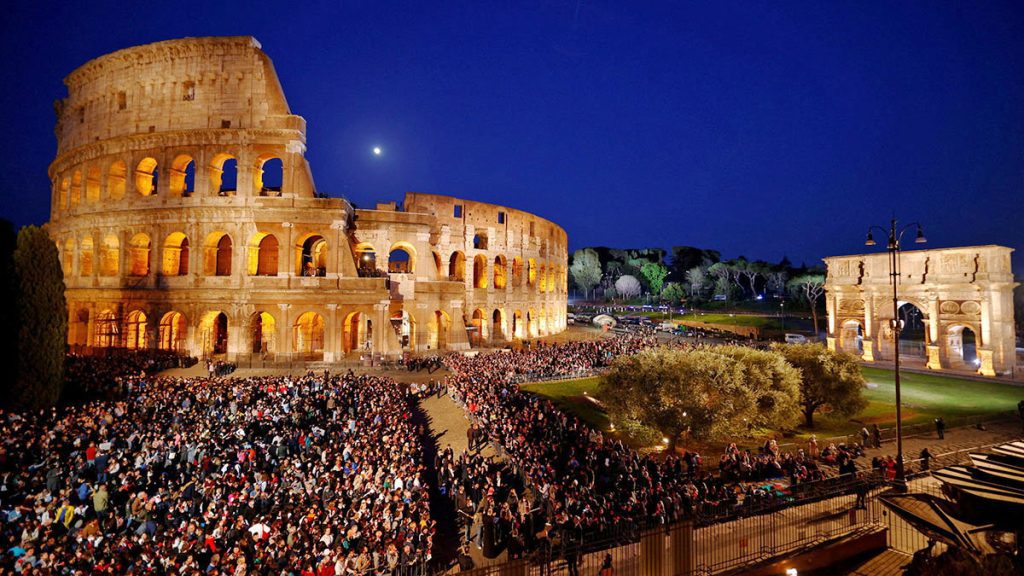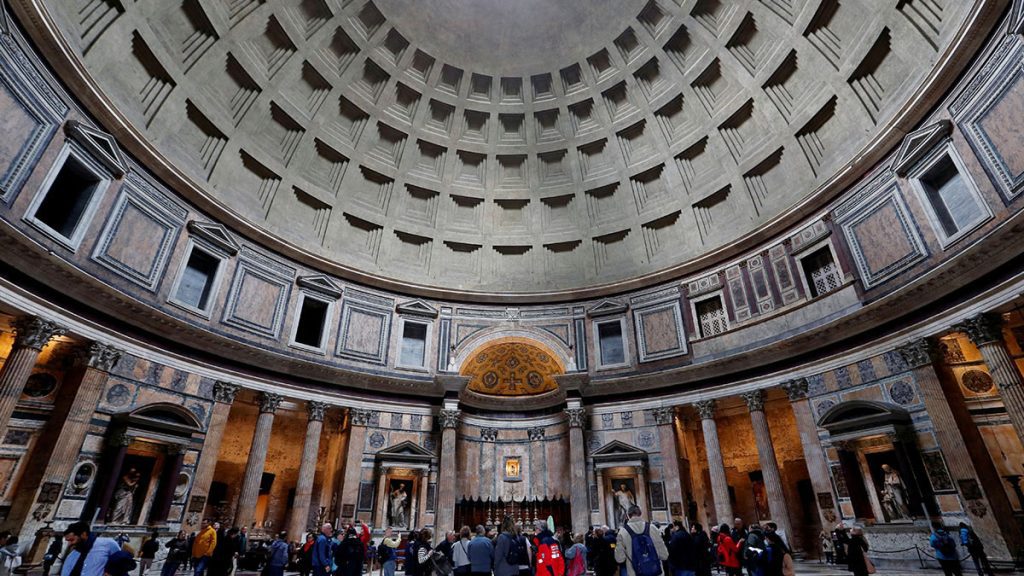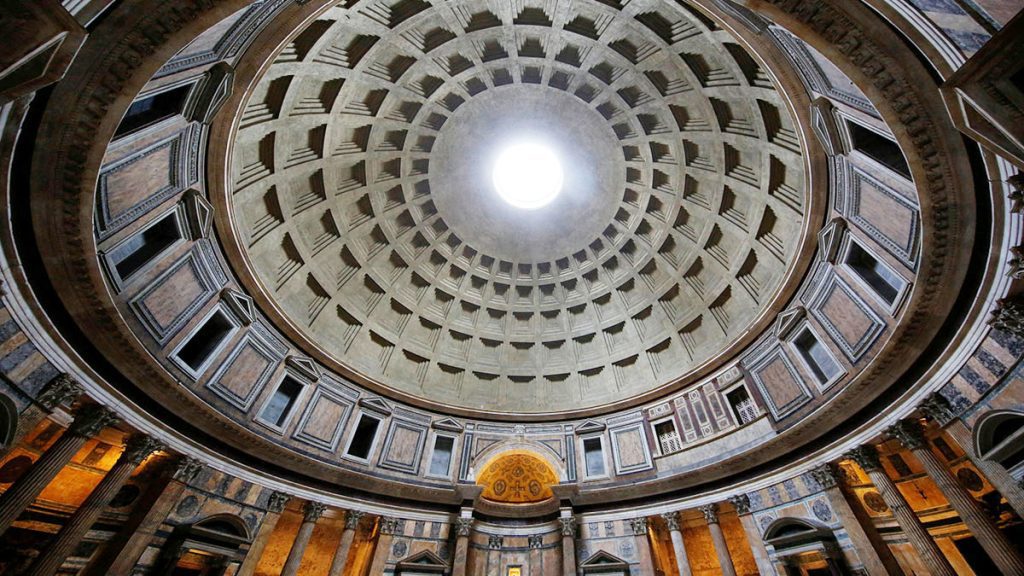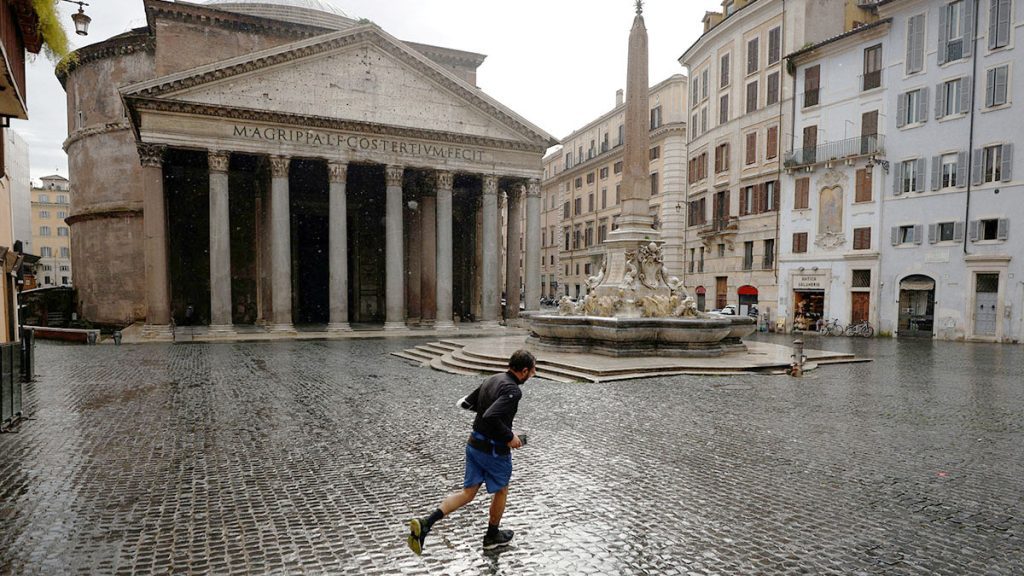
The ancient Romans were brilliant engineers and builders, creating a dazzling array of magnificent structures including some that have survived to modern times virtually intact like the domed Pantheon in Rome.
An indispensable material for the Romans was a form of concrete they developed that is known for remarkable durability and longevity, though its exact composition and properties have remained a mystery. A new study goes a long way toward solving this puzzle and, the researchers said, could pave the way for the modern use of a replicated version of this ancient marvel.

Roman concrete was introduced in the 3rd century BC, proving revolutionary. Also called opus caementicium, its three primary ingredients were lime, volcanic ash and water. It helped the Romans erect structures including temples, public baths and other big buildings, aqueducts and bridges unlike any fashioned to that point in history. Because the concrete could harden underwater, it also was vital for constructing harbors and breakwaters.
Many of these structures have endured for two millennia while modern concrete counterparts sometimes crumble in mere years or decades.
The researchers conducted a sophisticated examination of concrete from the walls of the ancient city of Privernum, located in Italy south of Rome. They deciphered unexpected manufacturing strategies that gave the concrete self-healing properties – chemically repairing any cracks or pores.

“The new results show that at the basis of ancient Roman concrete’s self-healing and longevity could be the way Romans mixed their raw ingredients, specifically how they used lime, the key component of the mix besides volcanic ash,” said Massachusetts Institute of Technology civil and environmental engineering professor Admir Masic, who headed the research published in the journal Science Advances.
“This is an important next step in improving the sustainability of modern concretes through a Roman-inspired strategy. We were able to translate some of the features in ancient Roman mortars that can be associated with self-healing into modern analogs with great success,” Masic added.

Lime is a white caustic powdery substance comprised of calcium oxide, made by heating limestone.
Roman concrete contains white bits called “lime clasts,” remnants of the lime used in the concrete. These features, the researchers said, appear to have resulted from a process called “hot mixing” that employs a lime variant called quicklime that reacts with water to heat the mortar mix and fosters beneficial chemistries that otherwise would not occur.
Experts long had believed the Roman concrete’s durability arose from another important ingredient: volcanic ash from the area of Pozzuoli on the Bay of Naples. Some viewed the lime clasts, absent in modern concrete, as an accidental byproduct of sloppy preparation or poor-quality materials. This study identified them as instrumental in self-healing.
“Essentially it works like this: when concrete cracks, water or moisture enters and the crack widens and spreads throughout the structure. The lime clasts dissolve with the infiltration of water and provide calcium ions that recrystallize and repair the cracks. Additionally, the calcium ions can react with volcanic ingredients to reinforce the structure,” Masic said.

The Pantheon, dating to the 2nd century AD, is a circular concrete building faced with brick, boasting the world’s largest and oldest unreinforced concrete dome. The massive Roman Colosseum, dating to the first century AD, also would have been impossible without concrete.
“The Romans were great engineers. The fact that we can still walk around many of their structures is a testament to that. Just go to the Pantheon and see the line of people waiting to view the magnificent dome,” said study lead author Linda Seymour, who worked on the research as a doctoral student at MIT and is now a project consultant with the engineering firm SGH.
“The Romans were savvy and adapted their materials based on a myriad of factors such as location and type of structure,” Seymour added.
Masic is a co-founder of a company called DMAT, based in the United States and Italy, that is commercializing concrete inspired by the ancient Roman version.
WASHINGTON (Reuters)
Inside Telecom provides you with an extensive list of content covering all aspects of the Tech industry. Keep an eye on our News section to stay informed and updated with our daily articles.